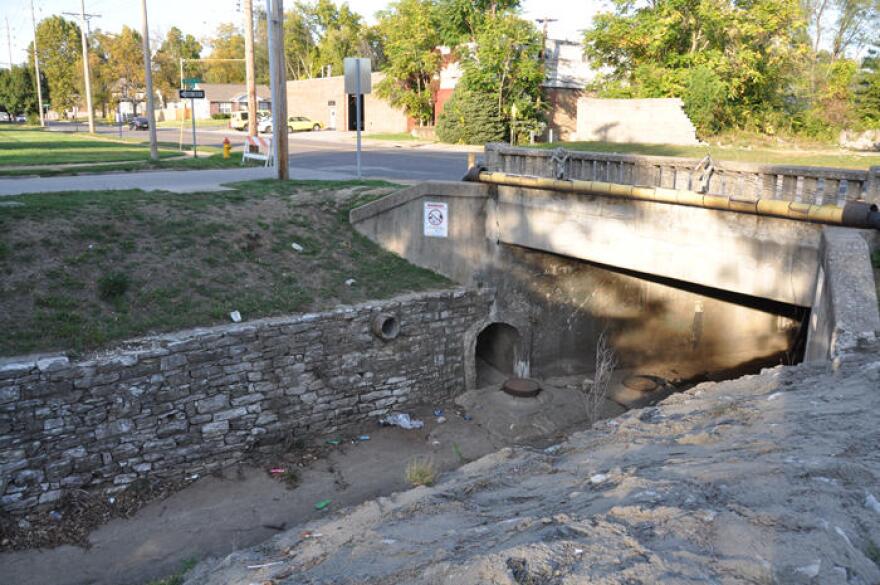St. Louis is among the U.S. cities where millions of gallons of sewage has flowed into rivers and streams, according to a new study.
The St. Louis region saw as much as 200 million gallons of sewage overflow due to the December floods, according to research released today by Climate Central, a science and news organization. It concludes that St. Louis and other cities that have trouble handling heavy rains need to do more to address the problem.
Climate Central researchers analyzed 70 sewage overflows since early 2015. They note that climate change is taking its toll on the nation’s sewage systems. During a record-breaking rainfall in December, when more than 9 inches of rain fell in St. Louis, river levels swelled, inundating sewage treatment plants.
The study argues that aging combined sewer systems, which exist in many Northeastern and Midwest cities, can increase the risk of a major overflow. In a combined sewer system, stormwater is allowed to enter the same channels as sewage. "During heavy rain, however, the extra stormwater can flood the system," the reporter said. "In some cases the combination of untreated sewage and storm runoff oveflows into nearby waterways via outfall pipes or backs up into streets, flowing up through storm drains or manholes."
St. Louis city runs on a combined sewer system while St. Louis County uses a sanitary sewer system, in which sewage and stormwater run through separate pipes. The report said the sanitary sewer system is less susceptible to massive overflows from heavy rain, but "they can still suffer similar problems under extreme conditions."
Lance LeComb, spokesperson for the Metropolitan St. Louis Sewer District, said the overflow problems in late December mainly occurred with the separate sewer system.
The MSD, which serves the city and 90 percent of St. Louis county, is spending $4.7 billion to repair the county's sewer system over the next two decades, to comply with a settlement wiht the Environmental Protection Agency over Clean Water Act violations. The improvements through Project Clear include upgrading old pipes in the county's system and building nine large underground tunnels to expand capacity for the city.
LeComb thinks such upgrades are short-term solutions to the heavier rains the St. Louis region has experienced in recent years. Planners need to rethink floodplain development, he said.
"As a society, we've built so much and developed so much in these floodplains," LeComb said. "That's really the problem. Are the right steps being taken to protect the infrastructure assets in addition to homes and businesses?"
The heavy rains in December flooded two sewage treatment plants and were out of service for weeks. Since the plants normally treat a combined volume of 20 million gallons of sewage every day, it's possible that between 100 and 200 million gallons of sewage flowed into the Meramec River during that time.
Given the effects of climate change, even with sewage system improvements, no system will be completely able to handle heavy rains, said Alyson Kenward, a senior scientist at Climate Central.
"We need to examine what we can do to decrease [global] warming to slow the increase of these downpours," Kenward said. "That's really a question of what we can do to reduce the impact of climate change."
Alicia Claire Lloyd, clean water policy coordinator at the Missouri Coalition for the Environment, said the St. Louis area needs a more comprehensive approach to climate resiliency such as using rain gardens are other environmentally friendly measures to divert rainwater from sewer systems.
"We have these rivers severed from floodplains, there's nowhere for the water to go," Lloyd said. "We need to be thinking of green infrastructure, green space and planting trees to capture some of that water."
Follow Eli Chen on Twitter: @StoriesByEli






